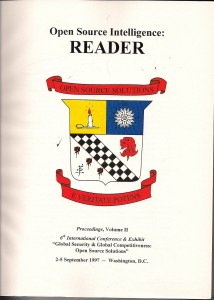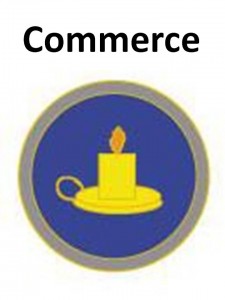 Elegantly brilliant, incisive clarity, quite extraordinary, February 22, 2008
Elegantly brilliant, incisive clarity, quite extraordinary, February 22, 2008
Paul Collier
I read a lot, almost entirely in non-fiction, and this book is easily one of the “top ten” on the future and one of the top three on extreme poverty, in my own limited reading.
The other three books that have inspired me in this specific area are:
The Fortune at the Bottom of the Pyramid
Creating a World Without Poverty: Social Business and the Future of Capitalism
The End of Poverty: Economic Possibilities for Our Time
There is an enormous amount of actionable wisdom in this book, which is deceptively easy to read and digest. The author's bottom line is clear early on:
A. The fifty failing states at the bottom, most in Africa, others in Central Asia, are a cesspool of misery that is terribly dangerous to all others, exporting disease, crime, and conflict.
B. The responsibility for peace to enable prosperity cannot be expected from within–it must be provided as a common good from outside. In support of this point, toward the end of the book, the author posits a 15:1 return on investment from $250M a year in investment and aid, mostly technical assistance.
This book is a superb guide for regional authorities and international coalitions with respect to the value of non-military interventions.
The author provides compelling yet concise overviews of the four traps that affect the billion at the bottom:
A. The Conflict Trap
B. The Natural Resource Export Trap
C. Landlocked in a Bad Neighbors Trap
D. Poor and Corrupt Governance
The author describes the need for a “whole of government” approach, both among those seeking to deliver assistance, and those receiving it.
I have a note, a new insight at least to me, that AIDs proliferated so quickly across Africa because of the combination of mass rape followed by mass migration. There are many other gifted turns of phrase throughout.
A study on the cost of a Kalashnikov is most helpful. The author tells us that the legacy of any war is the proliferation of inexpensive small arms into the open market.
Across the book the author points out that the gravest threat to governance and stability within any fragile economy is a standing army.
Each of the traps is discussed in depth.
The middle of the book outlines nine-strategies for the land-locked who suffer from being limited to their neighbors as a marketplace, rather than the world as a whole.
1. Work with neighbors to create cross-border transport infrastructure
2. Work to improve neighbors' economies for mutual benefit
3. Work to improve access to coastal areas (the author points out that the sea is so essential, that landlocked countries should not* be* countries, they should be part of a larger country that borders the sea)
4. Become a haven of peace, providing financial and other services.
5. Don't be air-locked or electronically-locked (the first study of the Marine Corps that I led in 1988-1989 found that half of the countries of concern did not have suitable ports but all had ample C-130 capable airfields).
6. Encourage remittances
7. Create transparent investment-friendly environment for resource prospecting
8. Focus on rural development
9. Attract aid
Toward the end of the book I am struck by the author's pointed (and documented) exclusion of democracy and civil rights as necessary conditions for reform. Instead, large populations, secondary education, and a recent civil war (opening paths to change), are key.
$64 billion is the cost to the region of a civil war, with $7 billion being the minimal expected return on investment for preventing a civil war in the country itself.
Bad policies come with a sixty year hang-over.
Asia is the solid middle and makes trade a marginal and unlikely option for rescuing Africa UNLESS there are a combination of trade barriers against imports from Asia, and unreciprocal trade preferences from richer countries. In the context of globalization, only capital and people offer hope.
In the author's view, capital is not going to the bottom billion because:
A. Bottom of the barrel risk
B. Too small to learn about
C. Genuinely fragile
In terms of human resources, after discussing capital flight, the author concludes that the educated leave as quickly as they can. I am inspired by this discussion to conclude that we need a Manhattan project for Africa, in which a Prosperity Corps of Gray Eagles is incentivized to adopt one of the 50 failed states, and provided with a semblance of normal living and working conditions along with bonuses for staying in-country for ten years or more. As I reflect on how the USA has spent $30 billion for “diplomacy” in 2007, and over $975 billion for waging war, (such that the Comptroller General just resigned from a fifteen year appointment after telling Congress the USA is “insolvent”) this begs public outrage and engagement.
As the book makes its way to the conclusion the author's prose grabs me:
“We should be helping the heroes” attempting reform
We are guilty in the West of “inertia, ignorance, and incompetence.”
The “cesspool of misery….is both terrible….and dangerous.”
Several other noteworthy highlights (no substitute for buying and reading the book in its entirety:
Aid does offer a 1% growth kick
Aid bureaucracy, despite horror stories, adds real value in contrast to funds that vanish into the corrupt local government
Misdirection of unrestricted funds leads to militarization and instability.
The author touches briefly on the enormous value that industry can offer when it is finally incentivized to do so. DeBeers and its certification process are cited with respect, perhaps saving diamonds from going the way of fur.
The author stresses that top-down transparency enables bottom-up public scrutiny and the two together help drive out corruption (something Lawrence Lessig has committed the remainder of his life to).
There is an excellent section on irresponsible NGOs, notably Christian Aid, feared by the government and not understood by the public.
I put the book down with a very strong feeling of hope.
Other books I recommend, in addition to the three above:
A More Secure World: Our Shared Responsibility–Report of the Secretary-General's High-level Panel on Threats, Challenges and Change
Deliver Us from Evil: Peacekeepers, Warlords and a World of Endless Conflict
Confessions of an Economic Hit Man
The Shock Doctrine: The Rise of Disaster Capitalism
The Unconquerable World: Power, Nonviolence, and the Will of the People
The leadership of civilization building: Administrative and civilization theory, symbolic dialogue, and citizen skills for the 21st century
Plan B 3.0: Mobilizing to Save Civilization, Third Edition









